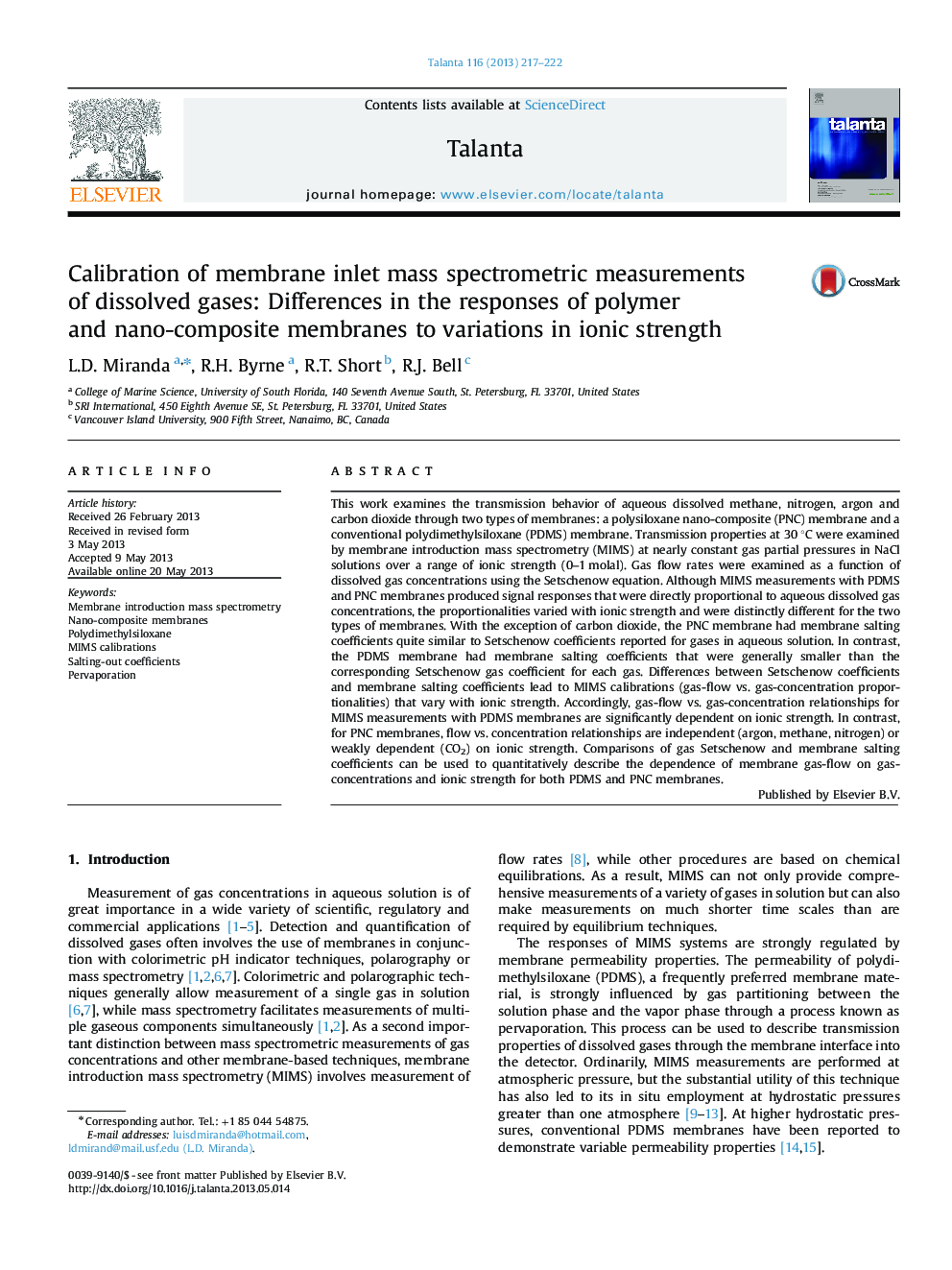| کد مقاله | کد نشریه | سال انتشار | مقاله انگلیسی | نسخه تمام متن |
|---|---|---|---|---|
| 7681946 | 1495819 | 2013 | 6 صفحه PDF | دانلود رایگان |
عنوان انگلیسی مقاله ISI
Calibration of membrane inlet mass spectrometric measurements of dissolved gases: Differences in the responses of polymer and nano-composite membranes to variations in ionic strength
ترجمه فارسی عنوان
کالیبراسیون اندازه گیری های طیف سنج جرمی گازهای محلول ورودی غشا: تفاوت واکنش های غشاء پلیمر و نانو کامپوزیت به تغییرات قدرت یونی
دانلود مقاله + سفارش ترجمه
دانلود مقاله ISI انگلیسی
رایگان برای ایرانیان
کلمات کلیدی
موضوعات مرتبط
مهندسی و علوم پایه
شیمی
شیمی آنالیزی یا شیمی تجزیه
چکیده انگلیسی
This work examines the transmission behavior of aqueous dissolved methane, nitrogen, argon and carbon dioxide through two types of membranes: a polysiloxane nano-composite (PNC) membrane and a conventional polydimethylsiloxane (PDMS) membrane. Transmission properties at 30 °C were examined by membrane introduction mass spectrometry (MIMS) at nearly constant gas partial pressures in NaCl solutions over a range of ionic strength (0-1 molal). Gas flow rates were examined as a function of dissolved gas concentrations using the Setschenow equation. Although MIMS measurements with PDMS and PNC membranes produced signal responses that were directly proportional to aqueous dissolved gas concentrations, the proportionalities varied with ionic strength and were distinctly different for the two types of membranes. With the exception of carbon dioxide, the PNC membrane had membrane salting coefficients quite similar to Setschenow coefficients reported for gases in aqueous solution. In contrast, the PDMS membrane had membrane salting coefficients that were generally smaller than the corresponding Setschenow gas coefficient for each gas. Differences between Setschenow coefficients and membrane salting coefficients lead to MIMS calibrations (gas-flow vs. gas-concentration proportionalities) that vary with ionic strength. Accordingly, gas-flow vs. gas-concentration relationships for MIMS measurements with PDMS membranes are significantly dependent on ionic strength. In contrast, for PNC membranes, flow vs. concentration relationships are independent (argon, methane, nitrogen) or weakly dependent (CO2) on ionic strength. Comparisons of gas Setschenow and membrane salting coefficients can be used to quantitatively describe the dependence of membrane gas-flow on gas-concentrations and ionic strength for both PDMS and PNC membranes.
ناشر
Database: Elsevier - ScienceDirect (ساینس دایرکت)
Journal: Talanta - Volume 116, 15 November 2013, Pages 217-222
Journal: Talanta - Volume 116, 15 November 2013, Pages 217-222
نویسندگان
L.D. Miranda, R.H. Byrne, R.T. Short, R.J. Bell,
